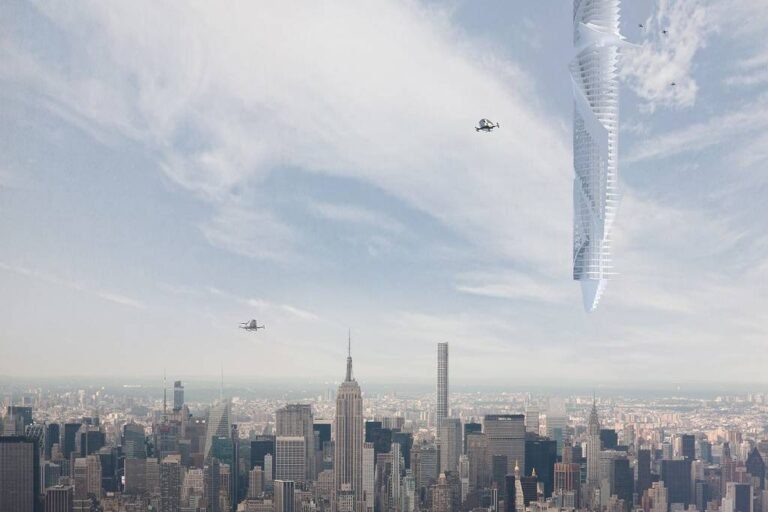Dubai is set to push the boundaries of architecture once again with an ambitious project that will redefine the limits of human imagination and engineering. The city has announced plans to construct the world’s first upside-down skyscraper, known as the Analemma Tower, which will hang suspended from an asteroid orbiting Earth at an altitude of 50,000 kilometers. This groundbreaking concept promises to become not only the tallest building ever constructed but also one of the most remarkable feats of human ingenuity.
A Visionary Concept: Analemma Asteroid hung Skyscraper in the Sky
The Manhattan-based Clouds Architecture Office envisions the Analemma Tower hanging from a large asteroid in a geosynchronous orbit above Earth. The design features high-strength cables tethering the tower to the asteroid, which follows a figure-eight pattern, passing over the northern and southern hemispheres every 24 hours. This orbit enables residents to experience multiple sunrises and sunsets each day from various global locations, creating a truly unique living experience.
Engineering Marvel: Building the Future
Dubai will host the construction of the Analemma Tower, utilizing the city’s expertise in high-rise buildings and cost-effective construction practices. The project will complete at a fraction of the cost of similar efforts in New York City. Builders will construct the tower in sections at various locations worldwide before transporting it to Dubai. From Dubai, the completed structure will suspend above its final destination, likely New York City, adding a breathtaking new feature to its iconic skyline.
Advances in cable engineering will be critical to achieving the necessary cable strength to support the structure. The cables must withstand the immense forces exerted by the tower’s weight and its movement through the sky.


Features and Sustainability: A Vertical City
The Analemma Tower is designed to function as a self-sustained vertical city. It will include:
- Business and Commercial Spaces: Located at the lower end of the tower.
- Residential Areas: Situated two-thirds of the way up, providing a unique living experience above the clouds.
- Recreational and Leisure Facilities: Occupying the uppermost sections of the tower.
The project focuses on sustainability. Space-based solar panels will power the tower, benefiting from constant exposure to sunlight to ensure an uninterrupted energy supply. The tower will capture water from clouds and rainwater and maintain it in a semi-closed loop system, which will enhance the building’s overall sustainability.

Technological Feasibility: From Science Fiction to Reality
Although the concept of a skyscraper suspended from an asteroid might seem like something out of science fiction, advancements in space technology have transformed it into a reality. Specifically, NASA’s successful mission to capture and direct asteroids into Earth’s orbit has paved the way for such projects. Consequently, the project will position the asteroid anchoring the Analemma Tower far above the International Space Station. Engineers will carefully calculate its orbit to ensure that the tower remains stable and secure.
As proposed, the top of the tower will sit at 32,000 meters, and the structure is expected to reach speeds of up to 300 miles per hour as it travels through the sky, offering an unprecedented living experience.
The Future of Urban Living: A New Era of Architecture
Dubai’s decision to spearhead the construction of the world’s first upside-down skyscraper marks the beginning of a new era in urban living and architecture. As a result, the Analemma Tower is not just a building; it represents a symbol of what the future holds. Specifically, it showcases how human creativity, advanced technology, and sustainable practices can come together to create something truly extraordinary.
As this visionary project progresses from concept to reality, it will inevitably capture the world’s imagination. Furthermore, it promises to set new standards for what is possible in the realm of architecture and urban design.


